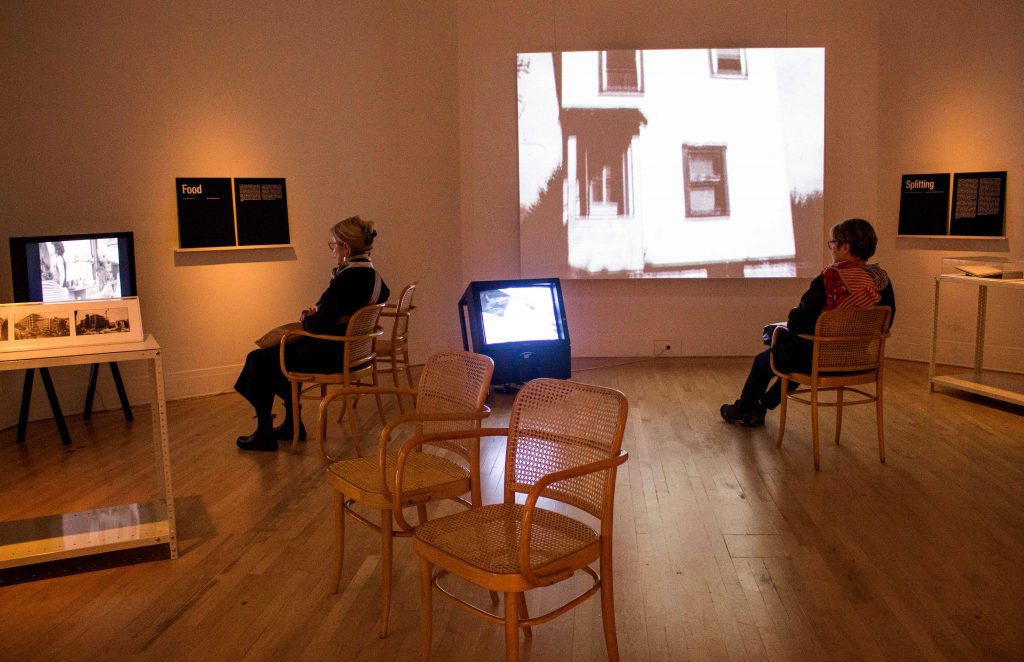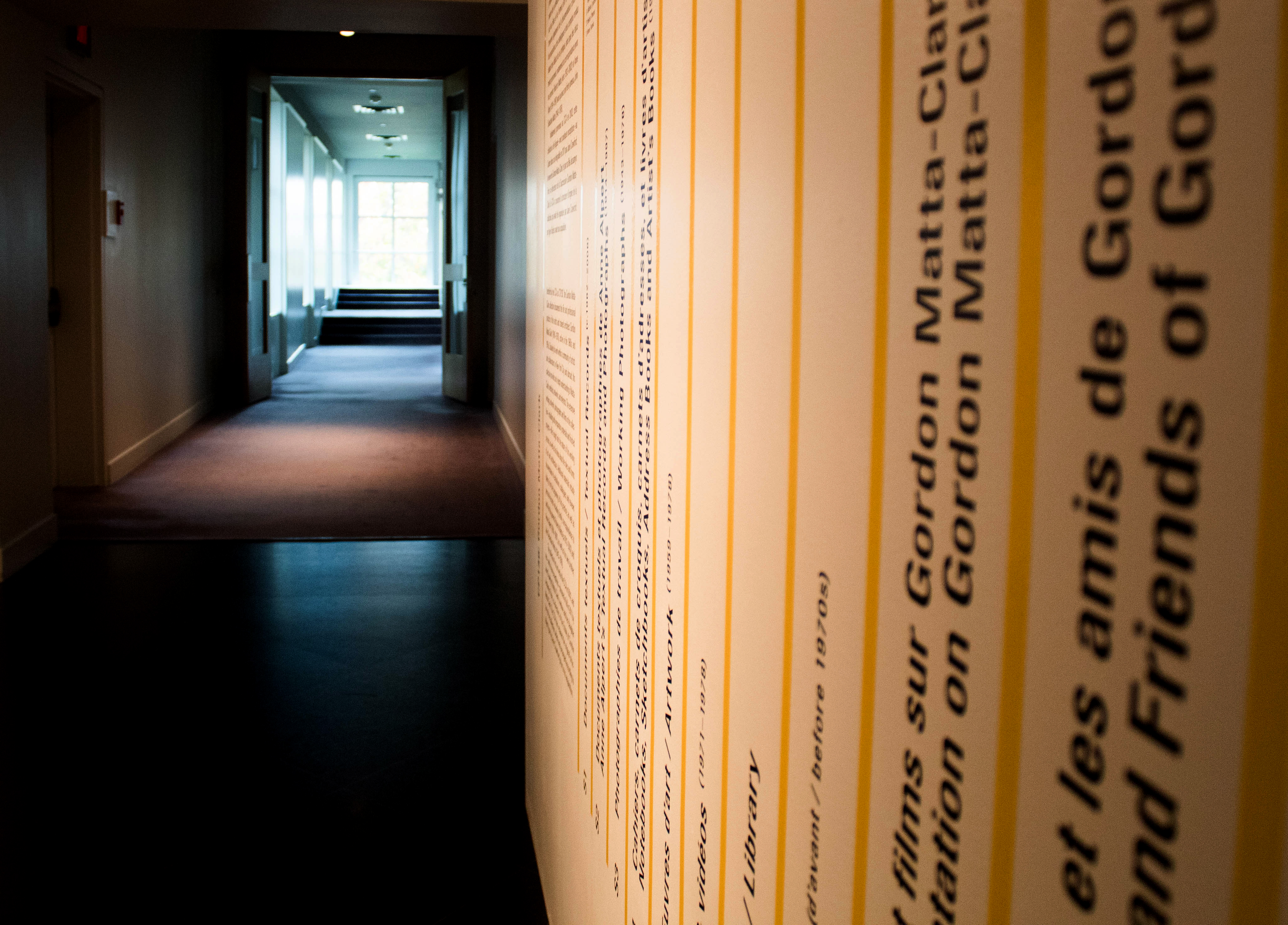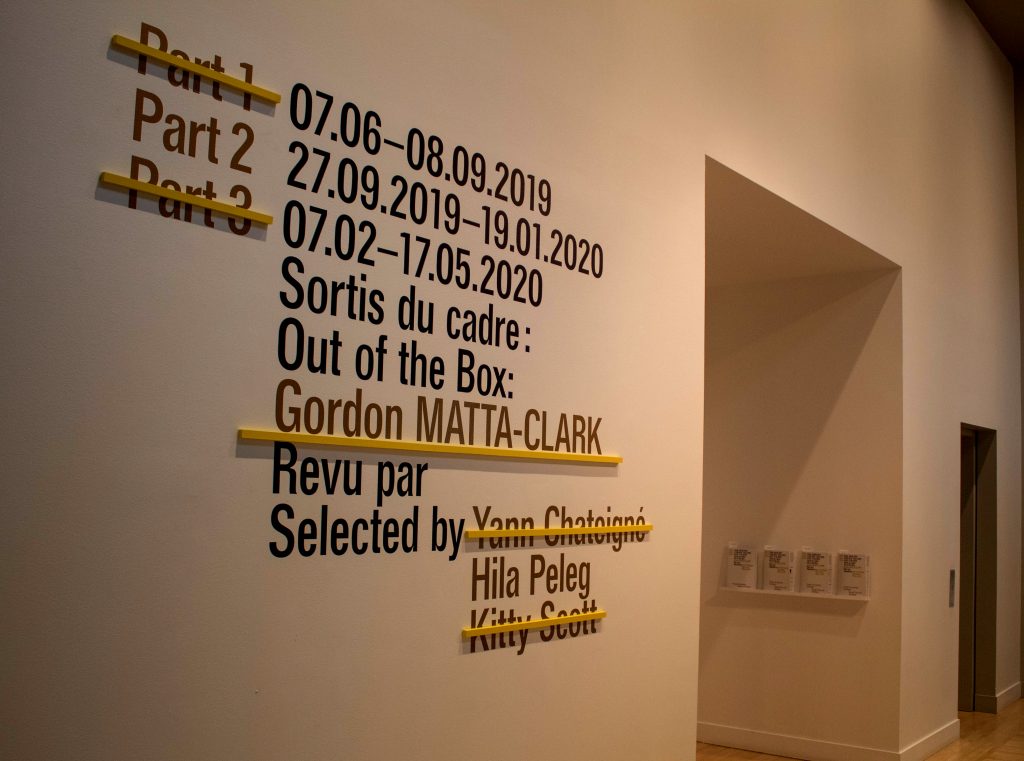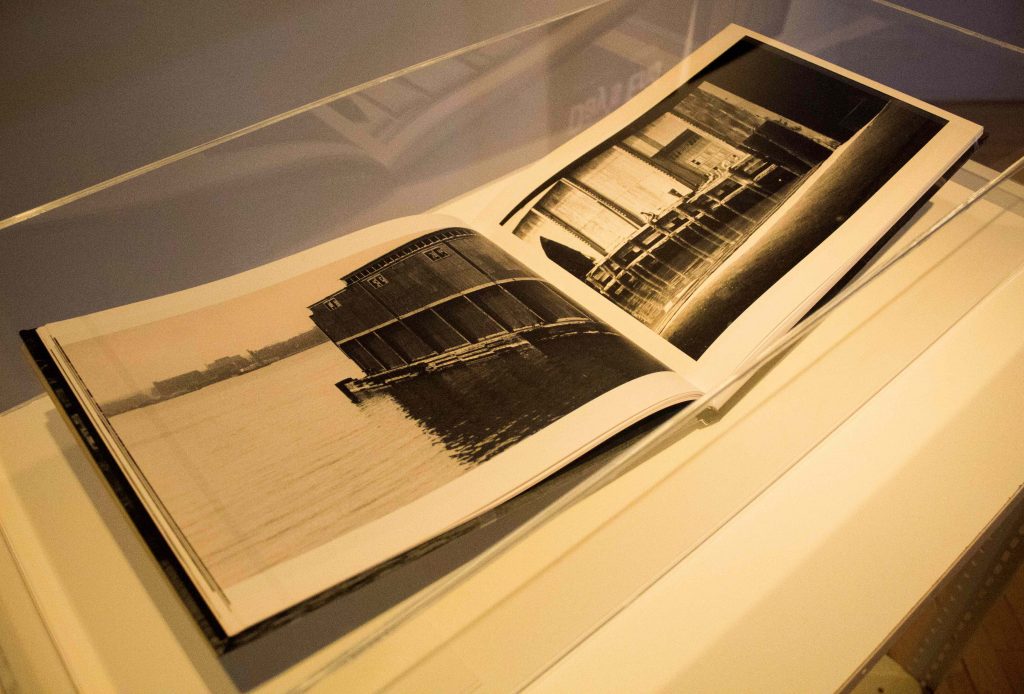Reflections on Gordon Matta Clark’s Rough Cuts and Outtakes
As usual, I was arriving late, not stylishly late, just expectedly late, as is expected of me. I have gotten better at this, and I had real justifications for it. I was swinging by from the FASA general meeting which happened to coincide with the vernissage of Rough Cuts and Outtakes, a collection of Gordon Matta Clark’s work exhibited by Hila Peleg, but by a couple of minutes.
So, as I was outside of the Canadian Centre of Architecture (CCA), I started to freak out a bit. The whole entrance was completely desolate, except for a pair of young boys who were kicking a football around and telling each other to go f*ck themselves. The buildings impressive white facade dwarfed them, making it feel even lonelier.
Considering this was the opening of an exhibition, I had expected at least a couple of stragglers waiting outside, having cigarettes or whatever people waiting for shows do – and considering I was a mere 10 minutes off it didn’t seem like an impossibility. I entered the reception lobby and greet the ticket sellers. Embarrassed by my tardiness, I hesitated at first but asked if the exhibit opened the following day, thinking I was a day off. They assured me that no, I was there at the right time and that the speaker had began, I just had to turn to the left. While I was momentarily relieved, I was still sent on a scramble down the long empty corridors of the CCA, accompanied only by fake plaster corinth pillars and victorian decor.
The speakers had begun, I could see from the far most right corner of the amphitheatre. It was dark and impossible to see if there were any seats left. An usher assured me there were seats but at the leftmost corner of the room, right at the front. I still could not see anything. I crossed the back row and stopped, seeing there was a cameraman aiming down the catwalk towards my expected seat. The usher finds this unacceptable, comes to me, and asks me what’s up. I said that everything was alright I just didn’t want to get in front of the camera and that I was happy to remain standing, but she wouldn’t have that and dragged me promptly to an empty seat.
When I finally settled, it was not just my cheeks that were relieved, but I had skipped out on the terribly boring introduction and hadn’t missed any of the juicy stuff. Hila Peleg, the curator of the exhibition, was only then walking towards the podium. Simultaneously, a large grey projection screen slowly scroll downwards. The lights on the stage went off and a projection flickered to life as grainy images of a sad looking and dilapidated house appeared. These were the cuts and extras from Clark’s famous work Splitting (1974), an intervention piece in which Clark and collaborators vertically sawed their way through the entirety of a New Jersey suburban residency that had been abandoned after residents were evicted in the wake of an upcoming urban renewal project.
Except again, this wasn’t Splitting proper. These were outtakes, the waning moments before the cutting began as the camera explores masses of personal objects strewn about by the yard of the residence while Clark and his collaborators crawl along the residence roof making measurements. The clips are few, damaged, and collaged together. Their only identifiable feature was that they are all images of the same house. But perhaps these off-hand shots are more defining and revealing as to the nature of Clark’s work than his mystical and anonymous spatial carvings will ever appear to the uninspired viewer. The great truth of his works lies in the old mattress, left to right in the cold sun. It speaks of people evicted and their homes and neighborhoods destroyed,and perhaps in their vernacular simplicity, they embody their energy and troubles better than any house ever could.
The city of Englewood, where the film shooting took place, is composed of mostly working class neighborhoods. The area has an almost equal number of African American residents to white of the city population. The particular neighborhood where Splitting was done was mostly of African American descent, according to census readings, hence it shouldn’t be surprising then to see how exclusionary social policies ended up mostly clearing out the neighborhood.
Other snippets of Clark’s work drew some of the same conclusions in different ways and forms, but it all came down to the same thing. Has architecture failed us?
This is the same question that resonates from the abandoned clutter of household items to the tired mistreated structures that star in Clark’s work. This is an amusingly loaded question coming from an ex-architecture student, a heated discourse that is a mixture of both personal feelings of shame and maybe relief.
I love architecture, don’t get me wrong. I love looking at buildings and losing myself in their mysterious contours and repetitions, but my question aims more towards the general policy of most architecture in the 21st century. Undoubtedly, construction is linked with urban planning, but for something meant to be a force of beauty and social cohesion, architecture usually comes down to money and time (as most things sadly). A surrounding rhetoric has been that of speedy cheap construction.

Additionally Clark displayed a longing interest for ethnography and, in particular, archeology. Some of the secondary material that will be shown in January of next year will include a great deal of the photographs he took during his trips to South America. From the snippets shown, these include the gloomy images of Inca and Mesoamerican relics.The importance of these is that constant interest in people, their customs, vestments and the role that they play or represent in the imagined spaces left by their ancestors. But this is nothing new, there has always been a profound interest in ruins by poets, writers and artists. From biblical descriptions of the destruction of Sodom and Gomorrah and their damning implications, the fantastic imaginings of the members of the mostly italian capricci movement in the 16th century, to the apocalyptic prophesying of european artists in the inter and post war period. There has been a historical shift in the portrayal of ruins, from one of mystical and nostalgic allure to one of foreshadowing of destruction, ironic considering the fate of most of Clark’s work.
Perhaps the haunting beauty of contorted shapes and spaces is the promise for narrative,and ultimately, human connection. We search tirelessly old sites and tombs to see that timeless connection between us and our ancestors, to see our humanity echoed generation through generation. Ruins, for this reason, could almost be seen as universal places of worship. But these places are perhaps disappearing faster than we realize, or more accurately, less future ruins are being produced.
Toronto-based architect Brandon Donnelly, and Canadian/American architect, professor and writer Witold Rybczynski, both commented in architectural blogs on the shortening lifespan of buildings in our day and age.
Concrete, steel, and glass, for all their scale, are a lot less durable than one might imagine. Projects built even 60 years ago require major renovations that can come to be several times more expensive than the original costs at their conception.
Put this next to the impressive basilicas of the renaissance, the pyramids or the temples of Teotihuacan that have lasted for hundreds to thousands of years. Now, it is simply cheaper to knock down ugly buildings that we make for whatever necessary reason. For the community of Englewood, it was urban renewal. In Beauburg, Paris, a facelift was ‘needed’ around the then anticipated Centre Pompidou. And constantly a problem that arises is that there was a lack of foresight. Useless or unneeded structure are built, that have little consideration for local communities and necessities. For example, one only has to look at the many failed housing projects in the US (Pruitt Igoe, Cabrini Green), Chinese ghost cities, or Venezuela’s Mission Vivenda. Perhaps the buildings in question were not the most beautiful or impressive. Perhaps they weren’t the most economically efficient use of space, nor the greatest investment. But perhaps that also speaks of a culture that isn’t building things meant to last. The human element is trampled, again and again.
There are still historical societies remembered through the preservation of their architectural structures today, but is there any concern for the preservation of our present or future structures, or will rebuilding every forthcoming day reach the point where history ceases to exist? And to that, what can be said about us, the tenants of these badly built structures. Are we to remain prisoners of badly constructed homes or should we demand better quality construction meant to foster better social equality?
The CCA is open from Wednesday through Sunday from 11 a.m. to 6 p.m. except Thursdays, during which they are open until 9 p.m. Admission is free for students any day of the week. For more information visit their website.
Photos by Annita Parish






